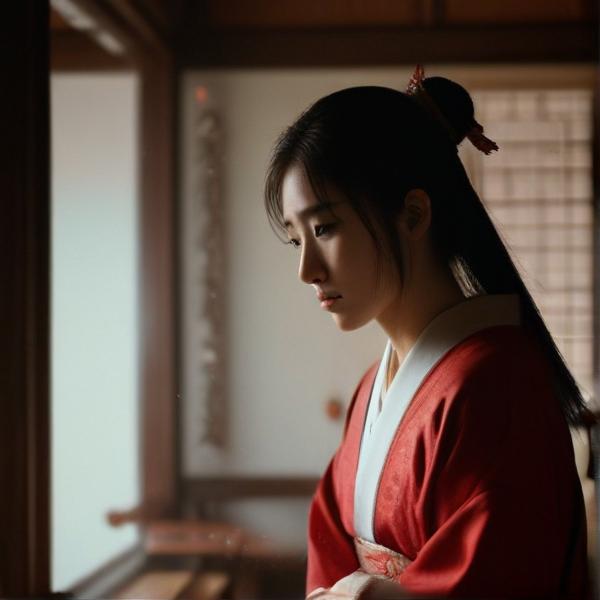基本信息 (Basic Information)
含义与用法 (Meanings & Usage)
中文核心释义 (Core Chinese Meaning): 自大,傲慢;为某事感到非常自豪或高傲。
英文核心释义 (Core English Meaning): arrogant, proud; to feel very proud or conceited due to something.
象形意义 / 为何这么写 (Pictographic Meaning / Writing Rationale)
文言文释义 (Classical Chinese Meaning)
与现代意义相近,多指骄傲、自大,也可指事物的繁盛或茂盛。Similar to modern meaning; often refers to arrogance or conceit, but can also mean something flourishing or luxuriant.
深入学习 (In-depth Study)
字源故事 (Origin Story)
字形演变 (Character Evolution)
常用词语和例句 (Common Words & Examples)
骄傲 (proud; arrogant)
她为自己的成绩感到非常骄傲。
Eng: She feels very proud of her achievements.
骄阳 (scorching sun; blazing sun)
我们在骄阳下运动。
Eng: We exercise under the blazing sun.
自骄 (to be conceited; to be arrogant about oneself)
不要因为一点成绩就自骄。
Eng: Don't become conceited just because of a little success.
相关成语 (Related Idioms)
骄兵必败
Meaning: An arrogant army is sure to lose.
多语言翻译 (核心释义) (Translations (Core Meaning))
- French: arrogant, fier
- German: arrogant, stolz
- Spanish: arrogante, orgulloso
- Italian: arrogante, fiero
- Portuguese: arrogante, orgulhoso
- Russian: надменный, гордый
- Arabic: متكبر، فخور
- Persian: مغرور، متکبر
- Dutch: arrogant, trots
- Polish: arogancki, dumny
- Vietnamese: kiêu ngạo, tự hào
- Ukrainian: зарозумілий, гордий
视频学习资源 (Video Learning Resources)
通过以下链接在热门视频网站搜索 "骄" 的更多讲解:
Search for more explanations of "骄" on popular video sites:
- 在 Bilibili.com 搜索 "骄 字源 说文解字" (Search on Bilibili)
- 在 YouTube.com 搜索 "骄 character origin etymology" (Search on YouTube)
网络参考 (Web References for "骄") ()
网络内容摘要 (Web Content Summary):
核心含义: “骄” 通常指骄傲、自负,即因为某些成就、条件而看不起别人或自我感觉优越。 Core meaning: "骄" generally means proud or arrogant—feeling superior or looking down on others due to one's achievements or circumstances.
象形起源/文化背景: “骄” 的左边“马”表示和马有关,古时与骑马、奔放等意思相关。右边“乔”取其声。它在甲骨文等古文字中含有“马高昂自得”的象征,也带有傲慢的情绪色彩。 Pictographic origin/cultural background: The left part “马” (horse) shows a relation to horses, symbolizing spiritedness or pride. The right part “乔” indicates pronunciation. In ancient scripts (oracle bones, etc.), it suggested the image of a horse holding its head high, showing pride or arrogance.
- 相关常用词或成语: “骄傲” (proud),“骄阳” (scorching sun),“骄兵必败” (arrogant troops are bound to lose)。在成语中常用来形容负面自满的情感。 Common phrases/idioms: For example, “骄傲” (proud), “骄阳” (scorching sun), and the proverb “骄兵必败” (arrogant troops will certainly lose). It usually carries a negative, self-satisfied connotation in idioms.
- 易混淆点: “骄”和“娇”容易混淆,“骄”偏向骄傲,“娇”指娇嫩、娇气(delicate or spoiled)。 Common confusion: “骄” (proud/arrogant) can be confused with “娇” (delicate/spoiled), which has a different meaning.
如需更深入了解其甲骨文象形本义,可参考专业汉字字源词典,目前网上仅有部分资料。 For deeper study of its oracle bone pictographic meaning, specialized etymological dictionaries are recommended, as online resources are limited.
汉字"骄"的起源、演变过程-汉字字源辞典
汉字字源辞典收录7747条汉字词条,基本涵盖了常见汉字的字源解析,是汉字研究的必备工具。
【骄,驕】的甲骨文金文篆文字形演变含义 - 甲骨文研究网 甲骨文密码字典 在线甲骨文字典研究 - 甲骨文研究网 甲骨文密码字典 在线甲骨文字典 ...
Hot Tags: 本网破译的所有甲骨文象形本义全部收录在《多功能汉字甲骨文破译字典》一书中,破解的古诗、竹简等古文作品收录在《新编甲骨文破译案例解析》一书中。 因时间、精力有限,破译的甲骨文象形本义只有少数上传到网站上,对甲骨文感兴趣、想全面了解者可参阅本网所著的这一套 ...
更多图片 (骄 More Images) ()
